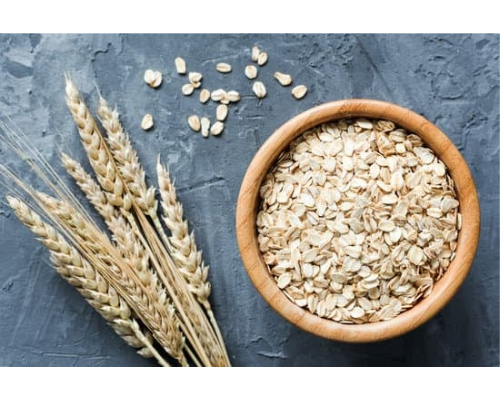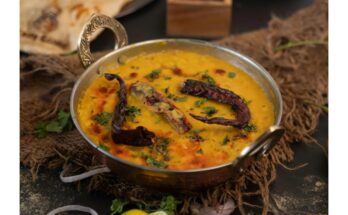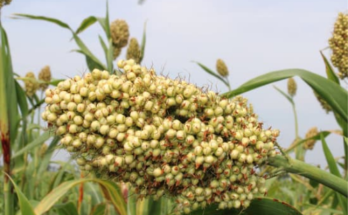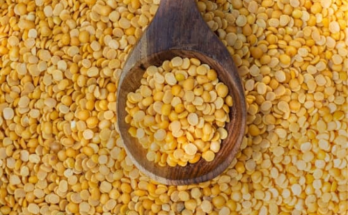Oats (Avena sativa) form one of the most nutritious of all cereals for human use, but the chief disadvantage is the difficulty in removing large proportions of hulls (20-30 per cent) from the grain. Oatmeal obtained from the removal of husk is a common article of breakfast (porridge) in Europe. Oatmeal flour is not suited to bread making.
Production: Oats, which were probably first cultivated in Europe, are an important food grain. About 90 per cent of the cultivated oats in Western countries is used as food. The chief oats producing countries in the world are USA, Russia and Canada.
Composition: Many varieties of oats are grown. The most cultivated varieties are A. sativa and A. byzantina. It is the latter variety that is most widely cultivated in India. The grain is cylindrical and comprises the caryop- sis or kernel, often called the “groat” and enclosed in the hull or husk. The average kernel content is 75 per cent. The composition of the Indian oat- meal is as follows: moisture, 10; protein, 13.6; fat, 7.6; carbohydrate, 62.8; and ash, 1.8 per cent. The grain contains considerable quantities of B- vitamins.
Processing: The processing of oats in mills is different from that of wheat because of the difference in the structure and composition between the two cereals. The husk of the oat grain is tough and fibrous and quite inedible for human beings. The fat content of oats is high and the grain contains an active lipase. The protein of the oat kernel does not form gluten when mixed with water because they naturally lack the proteins (gliadin and glutenin) that are needed to create gluten.
In milling, cleaned oats are subjected to kiln-drying to inactivate lipase. This process, is known as stabilization. Lipase serves no useful purpose in milled oat products, and if present, it would act on the fat to release undesirable free fatty acids. Stabilization also reduces moisture content and facilitates the subsequent shelling of the oats. The kiln-dried oats are then shelled resulting in the spitting off of the husk. The shelled groats are then polished and after removal of “oat dust”, they are transversely cut so that each kernel gives about four to five pieces (pinhead meal). This is subjected to further grinding when “oatmeal” is obtained. The average yield of oatmeal is 57 per cent.
Oat flakes or rolled oats are manufactured from pinhead meal (or from whole uncut groats) by cooking the pinhead meal in a steamer, rolling the cooked product while hot, moist and plastic, between heavy rollers and drying the flakes so formed.





I like what you guys are up also. Such clever work and reporting! Keep up the excellent works guys I’ve incorporated you guys to my blogroll. I think it’ll improve the value of my web site :).